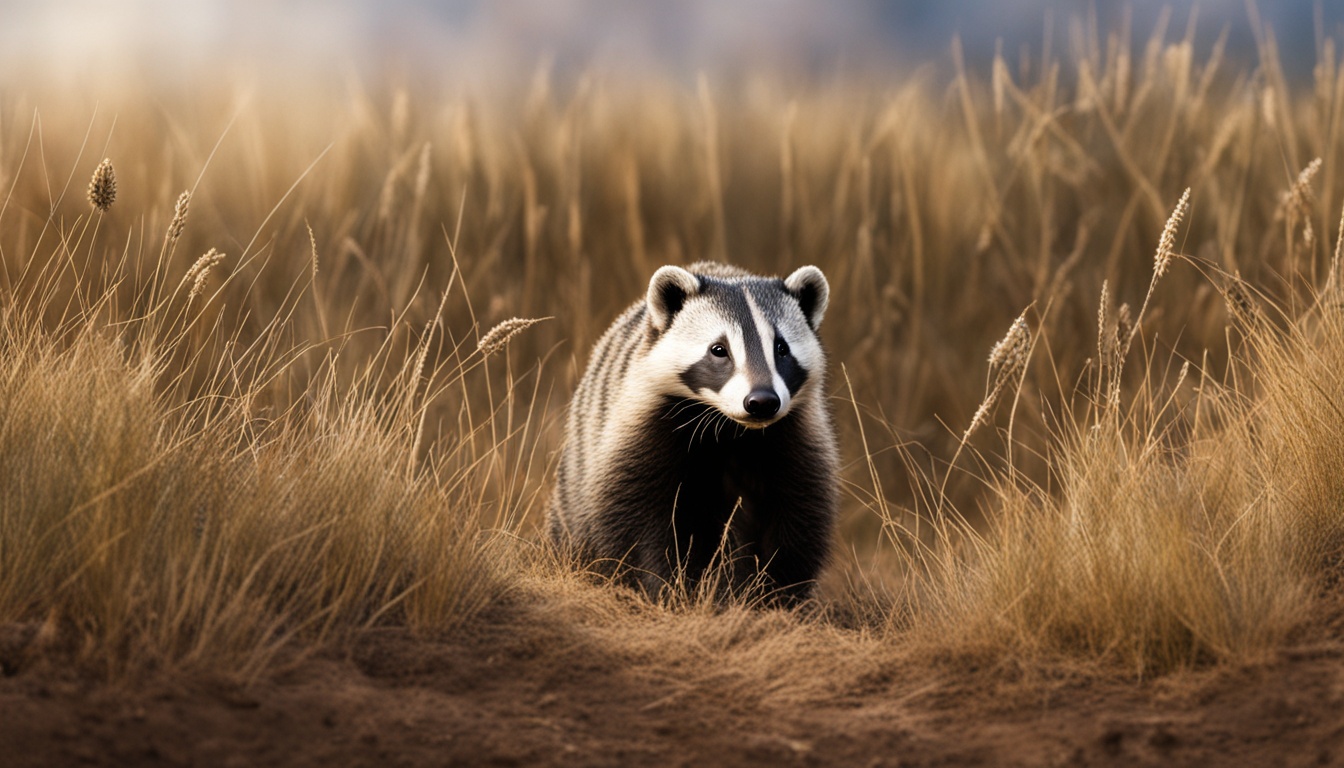Bald eagles, one of the most iconic birds in North America, are known for their majestic appearance and powerful flight. But have you ever wondered whether they use the same nest every year? In this section, we will take a closer look at bald eagle nesting habits and answer this question.
Bald eagles typically build large nests in tall trees near bodies of water, using sticks and branches to construct a sturdy platform for their young. These nests can reach up to 10 feet in diameter and can weigh several hundred pounds!
Key Takeaways:
- Bald eagles are known for their majestic appearance and powerful flight
- They typically build large nests in tall trees near bodies of water
- Bald eagles are known to reuse their nests, sometimes for many years in a row
Nesting Behavior of Bald Eagles
Have you ever wondered about the nesting behavior of bald eagles? These majestic birds are known for their impressive nests, which can weigh up to a ton and are often reused year after year. Let’s take a closer look at their nesting habits.
Bald eagles are known to reuse their nests, sometimes for many years in a row. In fact, some nests have been documented to last over 35 years! However, not all bald eagles reuse their nests – some will build new ones if their old nest is damaged or destroyed, while others may abandon their old nest altogether.
When it comes to breeding, bald eagles are monogamous and typically mate for life. Once the breeding season begins, the pair will work together to prepare their nest and lay their eggs. Bald eagles typically lay one to three eggs per year, which will hatch after about 35 days. The young eaglets will then be cared for by both parents, with the male typically providing most of the food and the female primarily responsible for keeping the nest tidy and warm.
Nest Reuse Patterns of Bald Eagles
Interestingly, not all bald eagles that reuse their nests do so in the same way. Some eagles will simply add additional sticks and materials to their nests each year, gradually building them up over time. Others may completely refurbish their nests, removing old materials and adding fresh ones. Still, others may simply use the same nest without making any changes at all. These variations in nest reuse patterns may be influenced by a number of factors, including the quality of the nest site, the availability of suitable materials, and the individual preferences of the eagles themselves.
Despite these variations, one thing is clear: bald eagles are remarkably loyal to their nests. They will defend their nests fiercely against potential predators and will aggressively chase away any other birds or animals that come too close. This nest fidelity is a key part of their breeding behavior and plays an important role in the overall success of their populations.
So if you happen to come across a bald eagle’s nest, remember that it may have been there for decades and could be home to generations of eagles. These impressive structures are a testament to the remarkable adaptability and resilience of these iconic birds.
Nest Fidelity of Bald Eagles
Have you ever wondered why bald eagles choose certain sites for their nests? These majestic birds exhibit a remarkable level of nest fidelity, meaning they often return to the same nesting site year after year. In fact, some bald eagles have been known to use the same nest for over 35 years!
Bald eagles are highly selective when it comes to choosing a nesting site. They prefer tall trees that provide a clear view of their surroundings, such as a river or wetland. They also tend to choose sites that are near a reliable food source, such as a lake or marsh where fish are abundant.
Bald eagles will often add new materials to their old nests each year, building on their existing structure to make it stronger and more secure. This behavior is particularly common for breeding pairs, who will work together to maintain and improve their nest.
| Benefits of Nest Fidelity | Consequences of Nest Abandonment |
|---|---|
|
|
Bald eagles who abandon their nest site are at risk of losing their territory and resources to other bird species. This can lead to increased competition for food and nesting sites, ultimately decreasing their chances of successful breeding.
Overall, the nest fidelity of bald eagles is an important aspect of their breeding behavior. By returning to the same nesting site year after year, they are able to maximize their chances of successful breeding and maintain a secure territory for their young.
Nest Reuse Patterns of Bald Eagles
Have you ever wondered if bald eagles reuse their nests year after year? The answer is yes! Bald eagles have been observed reusing their nests for decades, and this behavior is essential to their survival. However, the patterns of nest reuse vary, depending on several factors.
The main factor that influences nest reuse is the quality of the nest. Bald eagles often abandon a nest if it becomes damaged or unstable. However, if the nest is in good condition and located in a suitable habitat, they will reuse it without making any significant modifications. Researchers have observed nests that have been used continuously for upwards of 30 years.
Another factor that affects nest reuse is the availability of suitable nesting sites. Bald eagles prefer to build their nests in tall trees close to a body of water. However, as habitat destruction and deforestation continue to threaten bald eagle populations, suitable nesting sites are becoming scarce. In some cases, bald eagles have been observed reusing nests built by other large birds, such as ospreys or red-tailed hawks.
Factors Affecting Nest Reuse
The decision to reuse a nest or build a new one depends on several factors such as:
- The quality of the nest
- The location of the nest
- The availability of suitable nesting sites in the area
- The success of previous breeding attempts in the nest
Additionally, bald eagles may abandon a nest if they perceive a threat to their safety, such as predators or human disturbance. These factors can all influence the patterns of nest reuse observed in bald eagles.
In conclusion, while bald eagles do reuse their nests, the patterns of nest reuse vary depending on several factors, such as the quality of the nest and the availability of suitable nesting sites. Understanding these patterns will be critical in protecting bald eagle nests and ensuring the survival of this magnificent species.
Conservation Importance of Eagle Nests
If you’re curious about whether bald eagles use the same nest every year, then you’ll appreciate how vital nest conservation is to their survival. Bald eagles are a symbol of national pride in the United States, and their populations have rebounded in recent years. However, habitat loss and human interference still threaten their nesting sites, underscoring the need for protection.
The preservation of eagle nests is essential since they serve as crucial breeding, foraging, and roosting sites. Eagle pairs often return to the same nest each year, with some nests having been in use for decades. The unique size and location of eagle nests make them difficult to replicate, which highlights the need for their conservation.
Factors Affecting Nest Reuse
While it is common for bald eagles to reuse their nests, there are several factors that can influence their decision to do so. One of the biggest factors is the quality of the nest. If a nest has suffered damage or has become unstable, eagles may look for a new site to build their nest.
Another important factor is the presence of predators. Bald eagles are known to abandon their nests if they feel that it is too vulnerable to predation. This is why eagles often choose nesting sites that are difficult for predators to access, such as cliffs or isolated trees.
Availability of food also plays a role in nest reuse behavior. If a nest is located near a reliable food source, such as a body of water with plenty of fish, eagles may be more likely to reuse it in subsequent breeding seasons.
The behavior of other bald eagles can also influence nest reuse. If a pair of eagles successfully raised chicks in a particular nest, other eagles may be more likely to choose the same nest site in subsequent years. Additionally, if a pair of eagles is displaced from their nest site by another pair of eagles, they may choose to reuse their previous nest site in order to maintain their territory.
Finally, environmental factors such as weather patterns and climate change can also affect nest reuse behavior. For example, severe weather events can damage or destroy nests, while changes in habitat due to climate change may force eagles to find new nesting sites.
Nesting Habits of Bald Eagles
If you ever have the chance to observe a pair of bald eagles nesting, you will witness one of nature’s most awe-inspiring sights. These majestic birds have evolved a complex set of nesting habits that allow them to breed successfully year after year.
When it comes to nest construction, bald eagles are experts. They use a variety of materials, including sticks, grasses, and even seaweed, to create a sturdy platform for their eggs. The nests can reach massive sizes, with some measuring up to ten feet wide and weighing several hundred pounds.
Bald eagles are also highly selective when it comes to choosing a nesting site. They prefer to nest near bodies of water, such as lakes, rivers, or coastlines, where they have access to a steady supply of food. They also prefer to nest in tall trees, such as conifers, which provide a safe and sturdy location for their eggs.
Once the nest is constructed and the eggs are laid, both parents take turns incubating the eggs and caring for the hatchlings. Bald eagles are highly attentive parents, and they work together to protect and feed their young.
If you’re lucky enough to observe a bald eagle nesting, it’s important to remember to keep your distance. Bald eagles are protected by law, and disturbing their nests can result in hefty fines and even jail time. Always observe from a safe distance to ensure that these magnificent birds can continue to thrive in the wild.
Benefits of Nest Reuse for Bald Eagles
Reusing nests year after year can have several benefits for bald eagles, including:
- Less time and energy spent on nest construction: Bald eagles often spend several weeks constructing their nests from scratch. By reusing a pre-existing nest, they can save time and energy that can then be used to focus on other activities, such as hunting and caring for their young.
- Increased likelihood of successful breeding: Reusing a nest that has already proven to be successful in the past can increase the likelihood of successful breeding again in the future.
- Improvement of nesting site quality over time: The repeated use of a nest can lead to the accumulation of nesting materials and the creation of a larger and more stable nest over time, providing a better environment for breeding.
These benefits demonstrate why nest reuse is a common and preferred behavior for bald eagles when possible.
Adaptations for Nest Reuse in Bald Eagles
Reusing a nest every year requires certain adaptations from bald eagles to ensure its success. One such adaptation is their ability to reinforce and repair their nests. Bald eagles use sticks, twigs, and other natural materials to layer their nests to the required thickness. They also weave foliage into the nest, providing a cushion for their eggs and chicks.
Bald eagles also adapt their nesting behavior to suit the conditions of their environment. For example, they may relocate their nest to a more secure location if they face threats from predators, storms, or human activity. They may also modify their nest to make it more comfortable for their young, such as adding soft grass or feathers to the nest.
Another adaptation is their ability to maintain and defend their nesting territory. Bald eagles are highly territorial and will defend their nest against other eagles or intruders that pose a threat to their young. They will use vocalizations, body language, and even physical attacks to protect their nest and ensure its viability for the next breeding season.
Variations in Nest Reuse Behavior
While bald eagles are known for reusing their nests, variations in this behavior have been observed among different populations of the species. For example, eagles in some regions tend to switch to a new nest every breeding season, while others have been known to use the same nest site for decades.
The reasons for these variations are not entirely clear, but geographic location, habitat availability, and breeding success may all play a role. In areas with high nest availability, eagles may be more likely to switch to a new site each year, while those in more limited habitats may rely on the same nest for longer periods. Similarly, populations with higher breeding success may be more likely to continue using a successful nest site, whereas those with lower success rates may be more inclined to seek out new locations.
Furthermore, environmental factors such as weather patterns and natural disturbances (e.g. forest fires, floods) can also impact nest reuse behavior. Eagles may be forced to abandon nests in the event of severe storms or other natural disasters, and may need to find new nesting sites in the aftermath.
Overall, variations in nest reuse behavior among bald eagle populations highlight the adaptability of the species in response to changing environmental conditions. Long-term monitoring and research efforts will continue to shed light on these patterns and help inform conservation efforts for these iconic birds.
Long-Term Nest Monitoring and Research
Understanding the nesting patterns of bald eagles is crucial for their conservation, and this requires long-term nest monitoring and ongoing research efforts. By regularly observing eagle nests and collecting data on their behavior, scientists can gain valuable insights into their nesting habits and use this information to develop effective conservation strategies.
Long-term monitoring also allows researchers to track changes in eagle populations over time and identify any threats to their survival. For example, if eagle populations in a particular area are declining, nest monitoring can help identify the cause, such as habitat loss or pollution, and inform conservation efforts to address these issues.
Furthermore, ongoing research can shed light on any variations in nest reuse behavior among different populations of bald eagles. For instance, researchers have observed that eagles breeding in urban areas may be more likely to reuse their nests, possibly due to limited nesting sites in the area.
Overall, long-term nest monitoring and research are critical for the effective conservation of bald eagles and ensuring their survival for future generations.
Conclusion
Congratulations, you have now discovered the fascinating nesting habits of bald eagles! We can confirm that bald eagles do use the same nest every year, but only if the nest has been successful in hatching and rearing eaglets.
Through our exploration of the bald eagle’s nesting behavior, we have learned about nest fidelity and the preferred nesting sites of these magnificent birds. We have also delved into the patterns of nest reuse observed in bald eagles and the factors that influence this behavior. Additionally, we have highlighted the conservation importance of eagle nests and how protecting these nests benefits the overall population of bald eagles.
You now have a deeper understanding of the nesting habits of bald eagles and their physical and behavioral adaptations for successful nest reuse. We also discussed any variations in nest reuse behavior among different populations of bald eagles and the importance of long-term nest monitoring and ongoing research efforts in understanding these patterns.
Thank you for taking the time to explore the nesting habits of bald eagles with us. We hope this article has been informative and enjoyable, and we encourage you to continue learning about these majestic birds.
Do Bald Eagles recognize their parents when returning to the same nest every year?
The bald eagle parent-child bond explored as researchers ponder whether these majestic birds recognize their parents upon returning to the same nest each year. Studies suggest that bald eagles have a remarkable ability to identify their parents through vocalizations, behavior, and visual cues. This strong bond reflects the unique social structure and familial ties among these iconic birds.
Why Are Bald Eagles Considered Rare to See?
Why Are Bald Eagles Considered Rare to See? As observers scan the skies, the rarity of spotting bald eagles: their uniqueness uncovered becomes evident. These awe-inspiring creatures, with their distinctive white heads and striking brown feathers, possess a majestic aura that captivates many. Bald eagles, known for their symbolic representation of strength and freedom, are often elusive, inhabiting remote areas and facing habitat loss and persecution. Therefore, it is indeed a special moment when one catches a glimpse of these remarkable birds soaring through the wilderness.
FAQ
Q: Do bald eagles use the same nest every year?
A: Yes, bald eagles often reuse the same nest year after year. This behavior is known as nest fidelity and is common among bald eagles.
Q: What are the nesting habits of bald eagles?
A: Bald eagles exhibit specific nesting behaviors, including nest construction, site selection, and parental care. They are known to build large nests made of sticks and line them with soft materials like grass and moss. Bald eagles also prefer to nest in tall trees near bodies of water.
Q: Why do bald eagles reuse their nests?
A: Bald eagles reuse their nests primarily for convenience and efficiency. Reusing an existing nest saves time and energy compared to building a new one from scratch. Additionally, the nest’s location and structure may provide a secure and suitable environment for raising their young.
Q: What factors influence bald eagles’ decision to reuse or abandon their nests?
A: Several factors can influence the decision of bald eagles to reuse or abandon their nests. These factors include the condition of the nest, availability of suitable nesting sites, competition with other eagles, and the overall health and reproductive success of the breeding pair.
Q: How important is the conservation of eagle nests?
A: The conservation of eagle nests is crucial for the overall population of bald eagles. Protecting and preserving their nesting sites ensures the continuation of their breeding and nesting behaviors, which are essential for the survival and conservation of this iconic species.
Q: What are the benefits of nest reuse for bald eagles?
A: Nest reuse provides several benefits for bald eagles. Reusing a nest saves time and resources that would otherwise be spent on nest construction. Additionally, returning to a familiar nest allows eagles to maximize their familiarity with the area and increase their chances of breeding success.
Q: What adaptations do bald eagles have for successful nest reuse?
A: Bald eagles have developed physical and behavioral adaptations to facilitate successful nest reuse. These adaptations include strong talons and beaks for nest construction, keen eyesight for locating suitable nest sites, and territorial behaviors to defend their nests from intruders.
Q: Are there variations in nest reuse behavior observed among different bald eagle populations?
A: Yes, variations in nest reuse behavior can be observed among different populations of bald eagles. Factors such as environmental conditions, prey availability, and competition for nesting sites may contribute to these variations.
Q: Why is long-term nest monitoring and research important?
A: Long-term nest monitoring and ongoing research efforts are crucial for understanding the nesting patterns and behaviors of bald eagles. This data helps in conservation initiatives, population management, and overall understanding of the species’ ecology.
Q: Do bald eagles use the same nest every year?
A: Yes, bald eagles often reuse the same nest year after year. This behavior is known as nest fidelity and is common among bald eagles.











